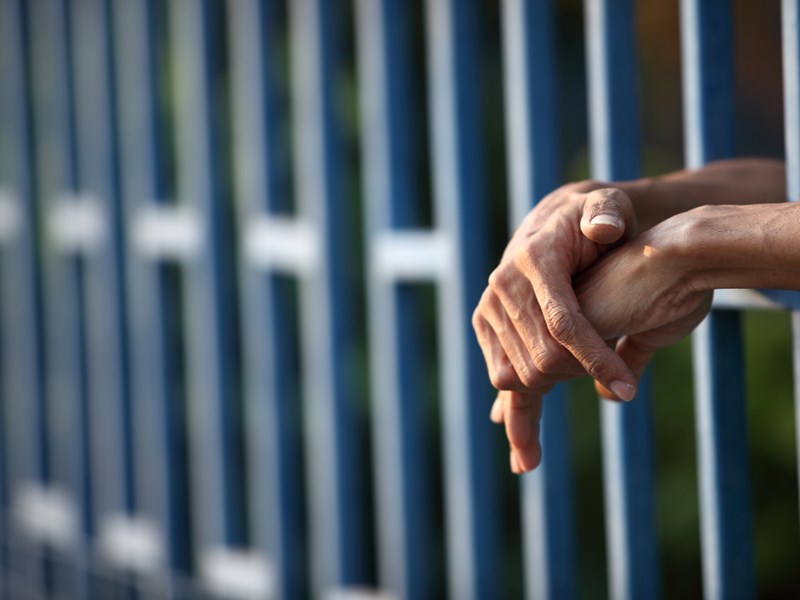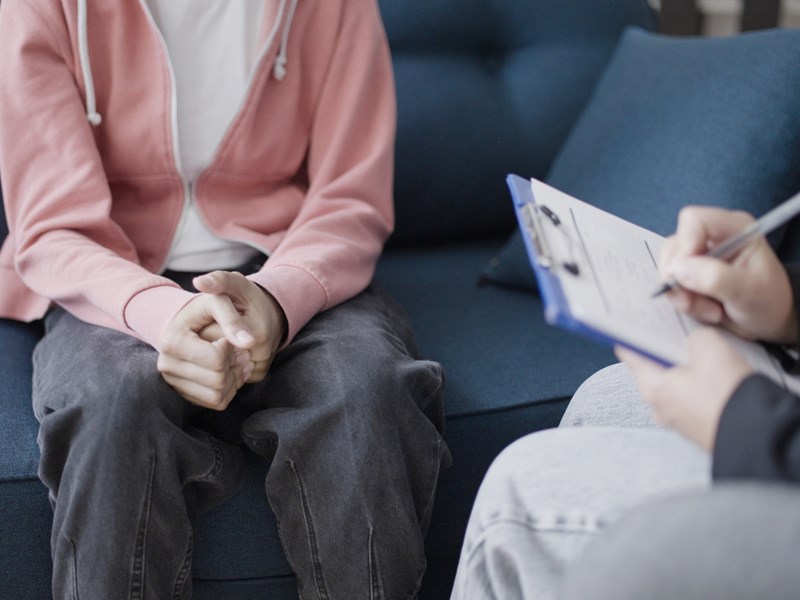- Home /
- News /
- General news
Rethinking the justice system
29 October 2022

Personal stories have helped to shape proposals for justice reform.
Christina* was a battler.
Those who knew her described her as generous, bubbly and brave.
But Christina’s life was marred by struggle.
To survive the family dysfunction, sexual violence and trauma she experienced from childhood, Christina turned to alcohol, then drugs—the only supports available to her as a teenager.
In her 20s, this dependency found her entangled in the criminal justice system. A system that, once entered, many find hard to escape.
Christina was fierce. She fought to be given access to support services, finding herself a rehabilitation program when the criminal justice system could not.
Rehabilitation helped Christina achieve several years in recovery. She spent this time as a peer support worker, using her lived experience to advocate for others.
Despite this success, Christina continued to struggle. A relapse—an inevitable part of recovery—led, again, to incarceration.
But Christina’s determination to survive, and to heal, wasn’t enough to save her life.
She died from an overdose in October 2020, shortly after her release from Dame Phyllis Frost Correctional Centre. Christina was homeless, having been released into temporary accommodation, and she was alone.
It was more than 24 hours before her body was discovered by police conducting a welfare check at the request of her mother.
This is the story The Justice Map, a research project advocating for justice reform, shared about their friend and colleague in a submission to the Legislative Council’s Legal and Social Issues Committee during the inquiry into Victoria’s criminal justice system.
Christina’s story, while tragic, is not unique. Countless others have, and continue, to fall victim to similar struggles—disadvantage and an under-resourced support system remain all too prevalent.
Those who do manage to rebuild, like Amy, a mother with lived experience of incarceration, do not come through the system unscathed.
‘I have a lot to be grateful for. However, there are other aspects of my life—some of the most important—that have been destroyed beyond repair,’ she revealed during the inquiry.
‘How can we expect this system to somehow reform people when it is a struggle to even survive it?’
The final report from the inquiry is substantial—it took the Committee many months of investigation to get to the report stage. In a bid to include as many individuals with lived experience of the justice system as possible, Christina and Amy’s stories are joined by many others of heart-wrenching pain and disadvantage.
Fiona Patten, Chair of the Legal and Social Issues Committee, stated that the inquiry had consolidated her view that Victoria needs to improve the delivery of services in the justice system across the state.
‘I want Victorians to be safe always, and we must make inroads into achieving that goal. But I do not believe—and certainly the evidence showed us this—that building more prisons will do that. In fact, it may do absolutely the opposite,’ she said.

Fittingly, a significant number of the recommendations outlined in the Committee’s final report focus on early intervention, including increasing investment in community-led, culturally appropriate support services, and raising the minimum age of criminal responsibility.
The recommendations are intended to improve the provision of timely social support and foster partnerships between providers to create greater integration between services. The aim is to divert individuals away from the justice system entirely.
The report also indicates the importance of education and meaningful employment to enhance the wellbeing of young people and help them avoid encounters with the criminal justice system. These factors have also been addressed in a number of the recommendations made by the Committee.
Committee member, Cathrine Burnett-Wake, noted her particular support for the Committee’s recommendation that the government provide funding to expand the use of youth workers and youth mentors in disadvantaged schools.
‘We know that if we have this, it will help prevent and stop potential criminal activity before it starts,’ she said.
Tien Kieu, Deputy Chair of the Committee, also highlighted the need to identify at-risk individuals and focus on strategies that can help to break the cycle of both disadvantage and antisocial behaviour that may lead to future contact with the justice system.
‘Something we found in this inquiry is that the best way of preventing crime is to address the root causes of the behaviour,’ he said.
Frequently, these root causes relate to social disadvantage. Individuals experiencing poverty, housing instability, trauma, exposure to violence and poor health have a heightened risk of encountering the justice system. The intertwined and compounding nature of social disadvantage means there is no easy way to solve these issues.
Indeed, the statistics paint a bleak picture: 87 per cent of women in custody have been victims of abuse. One third of Victoria’s prison population have a mental health diagnosis. A third also entered the prison system experiencing homelessness—and young people under 35 now account for 60 per cent of Victoria’s homeless population.
Notably, Victoria’s prison population continues to grow, rising by 57.6 per cent between 2010 and 2020. That means, for every 100,000 Victorians, 136.1 are incarcerated.
Like many of the stakeholders who participated in the inquiry, Monique Hurley, Senior Lawyer at the Human Rights Law Centre, attributes Victoria’s exploding prison population to a ‘legal system that turbocharges injustice’.
‘Increasingly prisons are being used as a catch-all for all social problems and serving as warehouses for people experiencing poverty, family violence, housing instability, mental health conditions and addiction issues,’ she said.
When you consider that half of all prison admissions represent only six per cent of Victorian postcodes—and roughly two per cent of postcodes contribute 25 per cent of that total—the influence of entrenched disadvantage becomes clear.
Yet, the number of Victorians experiencing disadvantage appears to be on the rise, with the COVID-19 pandemic exacerbating many of the issues associated with socioeconomic hardship.
Several of the inquiry’s contributing stakeholders, like The Justice Map, emphasised the profound connection between disadvantage and incarceration, with the prevailing issue of housing instability and homelessness highlighted by many as critical to reduce incarceration rates.
Housing affordability has long been considered a key contributor to Victoria’s growing homeless population, and rising interest rates are tipped to further increase rental costs. There are concerns that this may see many more Victorians experiencing housing stress by the end of the year putting the already vulnerable at greater risk.
Committee member Ms Burnett-Wake stated that the Committee was aware that homelessness in Victoria is a significant issue that can have severe ramifications, with many individuals intersecting with the justice system as a result.
‘When we were doing the inquiry into the justice system there was clear evidence coming through that if people had safe, secure housing they would be less likely to have interactions with the criminal justice system,’ she said.
Evidence provided throughout the inquiry showed that early intervention is the most effective way to assist individuals experiencing social disadvantage, including homelessness. While intervention can be provided at many points along an individual’s path, the inquiry revealed that the earlier intervention is provided, the more successful that intervention is likely to be.

Committee Chair, Fiona Patten, noted that the criminogenic nature of exposure to the justice system highlights the importance of focusing on early intervention.
‘The younger a person is when they brush against the criminal justice system, the greater the risk is that they will continue to brush against that justice system in an escalating way,’ she said.
Sgt Wayne Gatt, Secretary and Chief Executive Officer of The Police Association Victoria, reiterated this point, stating that early intervention plays a crucial role in crime prevention, especially for young people.
‘I think it is important to highlight that by the time you actually have somebody who is incarcerated at that age, we have failed them, looking backwards, so many times. It is an absolute measure of failure,’ he said.
‘They have tripped up so many times they are bruised and battered all over their body, and I think that is the important point to this here. That is not one missed opportunity; for these people it is 10, 20, 30, 40, 100 missed opportunities to intervene.’
Christina’s friends and colleagues at The Justice Map continue to mourn what they believe were the ‘completely foreseeable’ and preventable circumstances that led to her death. For too many Victorians, support is still unavailable when it could have the greatest impact.
Throughout her time as an advocate, Christina often spoke of the importance of secure housing and the provision of rehabilitation. When these supports aren’t available, Christina asserted, women die.
Victoria has seen a number of steps towards justice reform. Legislation changes regarding spent convictions—the subject of the Committee’s first inquiry for this parliament—have received positive feedback from many experts and advocacy groups.
Although the inquiry shows a great deal more reform is necessary to improve the criminal justice system for all Victorians, it provides a pathway towards change.
* The name Christina used in the article is a pseudonym.
About the Author

Ellie Claringbold
A participant in the Parliament Express program conducted by the Parliament of Victoria in partnership with Express Media. The program provided mentoring and engagement experiences, leading to a series of articles written by young Victorians for the Victorian Parliament's website.